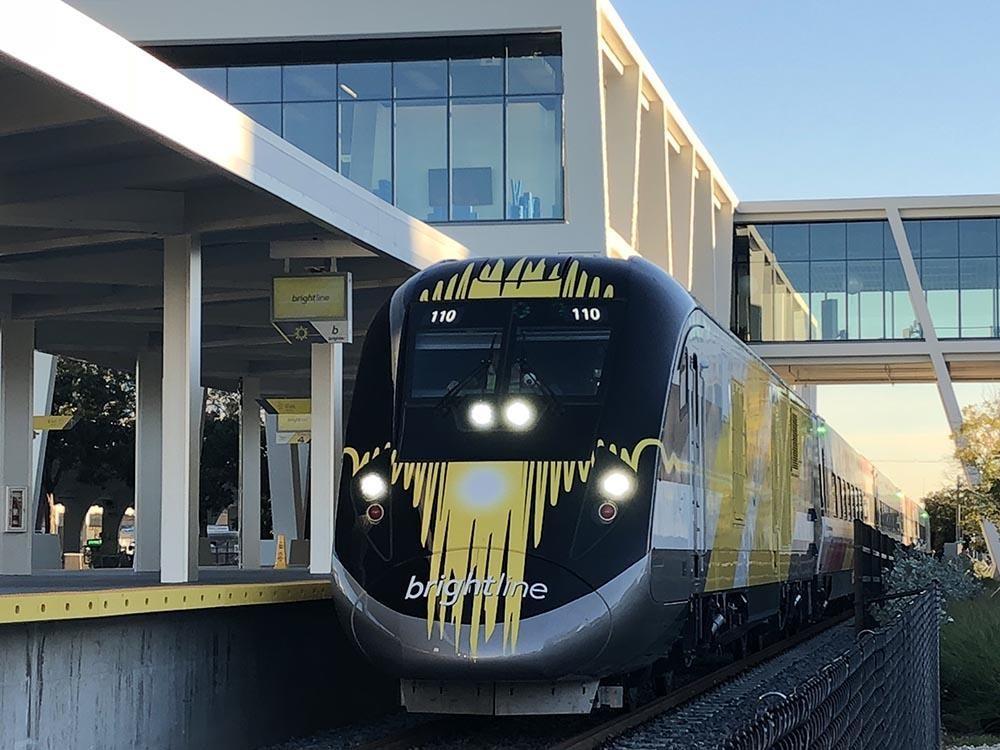Can Private Intercity Passenger Rail Return to America?
The three projects that would rekindle American train transportation
Private rail transport can work in the United States—we know because it still does.
America’s freight rail network has been robust for decades, due to 1980 federal legislation that reduced price controls and barriers to entry. The policy change helped make the U.S. the world’s leading freight rail network, more than doubling 2nd-place Germany in percentage of freight transported by rail.
Private passenger rail used to be the same. A number of early freight companies had passenger services, and by 1916, 98% of intercity travelers in the U.S. took a train. That number soon declined due to competition from the private, individual-centric, automobile industry, and strict government regulations.
Nowadays at the intracity level, we have public monopolies like NYMTA and SEPTA; while at the intercity level there’s Amtrak, a quasi-public, money-losing corporation that was formed in 1971 to replace the private firms.
But things could soon change.
As the U.S. urbanizes and people seek alternative ways to get around, the market has planned or produced 3 examples of high-speed intercity passenger rail (HSR). While the lines have needed some level of government assistance and organization, they’re still largely private and for-profit, and some have expansion plans.
Virgin Trains USA
Formerly known as Brightline, this is the only active private intercity passenger rail in the U.S. It’s also a model for how this industry could work elsewhere.
Virgin is a “higher-speed” rail with a 79mph operating speed that connects Miami, Ft. Lauderdale, and West Palm Beach.
It is owned and operated by Fortress Investment Group, with Virgin Group, the famed conglomerate of Richard Branson’s, offering some financing and branding rights. Its annual ridership is nearly 900,000 (although operations are closed for another few months due to coronavirus).
What makes Virgin embody international best practices and out-perform public rail agencies in the U.S. is its use of value capture.
Virgin owns some land along the line and stations and is using it to build dense nearby development. This includes two 30-story apartment towers that were completed this year at Virgin’s Miami Central station and built atop the rail platform.
This development will create a financial feedback loop for Virgin: the rail helps bolster the customer base and value for the housing, and revenue from the housing is then sunk back into maintaining (and boosting the ridership for) the rail.
Virgin’s future plans include extending trains and developments to Boca Raton, Tampa, Orlando, and other parts of Florida. Some of these lines will involve Virgin leasing space from the state to operate on land adjacent to Interstate 4. This public-private partnership for the carveout of right-of-way could also become a best practice that Florida exports elsewhere in America.
Texas Central
The Texas Central project is a reminder of how tough private rail is to pull off when right-of-way issues haven’t been solved.
It’s been in planning stages since 2013 but may not open (if it does at all) until 2026. The HSR would connect downtown Houston and downtown Dallas (along with College Station, Huntsville, and other cities) at an operating speed of 186mph. It would use the N700 Series Shinkansen model trains used by Central Japan Railway Company.
The project is owned and managed by Texas Central Partners LLC, and the train would be operated by Spanish company Renfe Operadora and could cost $30 billion. While Texas Central is framed as a private project, the company may seek federal funds.
Some of the trains will run along existing highways and freight rail tracks, although there’s been a long legal battle on whether it can use eminent domain to build a new track. This shows the thorny nature of private infrastructure—while eminent domain is generally accepted as a necessary evil for government transportation projects—should it be used for private projects?
The U.S. Supreme Court case Kelo v. City of New London ruled that eminent domain can be used this way, and a recent state court ruling confirmed that Texas Central can too.
An opposition group is seeking to appeal this ruling to the state Supreme Court.
Assuming the rulings end in Texas Central’s favor or it secures funding in some other manner, it could be a good project for the region. Dallas and Houston are, respectively, the 4th and 5th largest U.S. metros, and routinely have the highest annual net population growth. The addition of HSR, especially if it’s self-supporting, would speak to the rise of this fast-urbanizing region in Texas.
XpressWest
XpressWest, formerly known as DesertXpress, is another Virgin Trains USA venture. It would connect Las Vegas with Victorville, CA (the train won’t extend to Los Angeles due to the cost of building in urban areas).
The $4.8 billion project has been stuck in planning since 2005, struggling to find funding until Virgin took over, and won several billion in tax-exempt bonds from the California government.
Ground is expected to be broken this year, and the project to be completed by 2023.
The route, which also goes along highway right-of-way, will move at an operating speed of 150mph, making the trip in under half the time an automobile would. The long-term plan is to have XpressWest lines branching out from Vegas southbound to Phoenix, and westbound to Salt Lake City and Denver.

Although the market could provide rail-driven solutions to several of America’s transportation issues if left to its own, the environment is currently fraught with regulation and competition for publicly acquired land.
Catalyst articles by Scott Beyer | Full Biography and Publications
